See also:
Fujiya Hotel, Miyanoshita
Mount Fuji reflected upon Lake Ashi
Nagao Pass & Mt. Fuji, Hakone, c. 1940
“A wise man will climb Mt. Fuji once; a fool will climb Mt. Fuji twice.”
– An old Japanese proverb
“But look! the peerless mountain suddenly stands before us more resplendent in her dazzling morning robes than at midday.
“Fleecy clouds fall away from her matchless form as if the goddess had begun to disrobe; the gauze-like veil that has concealed her marble white countenance drops from the snowy forehead that she may catch the first flash of the golden eye of the east. With jealous haste the hills of the north then tear aside with their long pine arms the mist curtains enveloping them, when their daring profiles stand boldly out against a sapphire background.
“These detached draperies of more than silken delicacy hang for awhile tremulous in the airy space, rising and falling with gentle undulations on the soft breath of morning; now they break apart and now they cling together now they are torn into a thousand shreds, to swim away on the current of air, growing dimmer and dimmer as they float into the distance, or sink slowly, lightly, into the dark valleys, unnumbered veils of finest gauze wafted whither the wind listeth.”
– Japan: The Place and the People, by George Waldo Browne, 1904
“Mt. Fuji, the highest (12,461 ft.) and the most majestic mountain in Japan, rises from the plain at its base in a long gentle conical shape. The ascent of Mt. Fuji is limited to the climbing season in summer but the base district, with its five lakes, constitutes a favorite all-year-round resort and offers a variety of recreations throughout the year.
“It is thought that the first recorded ascent was in 663 CE by an anonymous monk. The summit has been thought of as sacred since ancient times and was forbidden to women until the Meiji Era. Ancient samurai used the base of the mountain as a remote training area, near the present day town of Gotemba. The shogun Minamoto no Yoritomo held yabusame [mounted archery tournaments] in the area in the early Kamakura period. Founded in 1290 on the lower alps of Mount Fuji in Shizuoka Prefecture is the Taisekiji temple complex, a central base and headquarters of Nichiren Shoshu Buddhism.
“The first ascent by a foreigner was by Sir Rutherford Alcock in September 1868, from the foot of the mountain to the top in eight hours and three hours for the descent. Alcock’s brief narrative in The Capital of the Tycoon was the first widely disseminated description of the mountain in the West. Lady Fanny Parkes, the wife of British ambassador Sir Harry Parkes, was the first non-Japanese woman to ascend Mount Fuji in 1869. Photographer Felix Beato climbed Mount Fuji in the same year.”
– Wikipedia
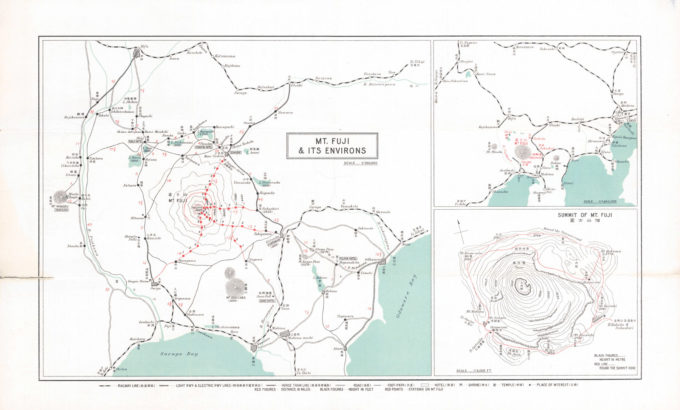
Map: Mt. Fuji and its environs, 1915. The red dotted lines represent the various ascent trails and stations to the summit. [Source: David Rumsey Collection]
“… Although remarkably uniform in its general features, Mt. Fuji always presents changed aspects when viewed from different places. For instance, when viewed from Gotemba or Yoshida, Fuji’s summit is seen with the right-hand side higher than the left while just the opposite is the case when viewed from Omiya.
“The most advantageous places to appreciate its beauty, however, are anywhere from 10 to 20 miles from the mountain, and the best time of day is either early in the morning or late in the afternoon just before sunset. The best season is winter.”
— Japan: The Official Guide, Japan Government Railways, 1941.
“The first documented ascent of [Mt. Fuji] was made by a Shintoist pilgrim named En no Ozumu in the 8th century; the first Westerner to climb was Sir Rutherford Alcock, the British consul who ascended in 1860 with his Scottish terrier Toby.
“The world’s oldest mountain-climbing picture, painted in the 15th century, depicts monks climbing Mt. Fuji. Only religious pilgrims were allowed to climb until the 19th century; women were not allowed at all until 1871.
“… The most fervent Fuji worshippers are the members of the Shintoist sect Fuji-ko, who founder, the 16th-century monk Fujiwara no Kakugyo, supposedly climg Fuji 128 times and lived to be 106 years old. Fuji-ko pilgrims stay in special shrine lodges at the base of the mountain, wash themselves in the purifying water of the five lakes nearby, get blessed by a priest, and then time their ascent so that they arrive at the summit at sunrise.
“During the 17th and 18th centuries as many as 10,000 Fuji-ko would climb each year, but these days they are far outnumbered by ordinary Japanese and tourists.”
– “Transcendence”, by Susan Orlean, Japan: True Stories of Life on the Road, edited by Donald W. George & Amy Greimann Carlson, 1999
“It was on the 26th day of December [1881] at 6.30 in the morning that I first saw Japan. As yet this strange country was enveloped in a soft mist above which the sun was only just rising, but as the mist dispersed we could see that the land was pleasantly undulating and richly wooded ; that in some of the valle}’s, fissures, and gorges nestled little picturesque villages ; that in sheltered spots palm-trees, with their plumous tops, rose high above the houses that found shelter beneath them, and that junks of quaint aspect ploughed the shallow waters of the coast.
“A cry arises from the Japanese passengers, who are earnestly looking to the left (for we have several on board) – Fujiyama! I look in the direction in which they gaze, but see no mountain. The undulating land in front is perfectly distinct, and is thrown out on a background of gray-and-white cloud which rises high behind it; but I see no mountain.
“Under the guidance, however, of Japanese friends, I look above these clouds, and there, at a vast height, shines the immaculate summit of Japan’s peerless cone. I have seen almost every alpine peak in the land of Tell; I have viewed Monte Rosa from Zermat, Aosta, and Como; I have gloried in the wild beauty of the Jungfrau and the precipitous heights of the Matterhorn; but never before did I see a mountain so pure in its form, so imposing in its grandeur, so impressive in its beauty, as that at which we now gaze.
“I do not wonder at the Japanese endowing it with marvelous powers; I do not wonder at this vast cone around which clouds love to sleep being regarded as the home of the dragon – the demon of the storm – for surely this mountain is one of nature’s grandest works!”
– Japan: Its Architecture, Art, and Art Manufactures, by Christopher Dresser, Ph.D, 1882
Twenty More Views of Mount Fuji
- Fuji from Ukishima, c. 1910.
- Mt. Fuji from Yoshiwara, c. 1910.
- View of Mt. Fuji, from Ishikawa, Yokohama. c. 1910.
- Fuji from Kawaibashi, c. 1910.
- Fuji from Tagonoura, c. 1920.
- Fuji from Omiya, c. 1910.
- Fuji from Koyama, c. 1910.
- Fuji from Yamanaka, c. 1910.
- Untitled view of Mt. Fuji, c. 1910.
- View of Mt. Fuji, c. 1910.
- Fuji from Otometoge, c. 1910.
- Fuji from Funazu, c. 1910.
- Untitled view of Mt. Fuji, c. 1920.
- Untitled view of Mt. Fuji, c. 1920.
- Tokaido Main Line observation car, c. 1920.
- Fuji from Lake Motosu, c. 1920.
- Mt. Fuji from Lake Ashi, Hakone, c. 1930.
- Untitled view of Mt. Fuji, c. 1940.
- Fujiyama from Nagao Pass, c. 1940.
- Mt. Fuji from Shizuoka, c. 1950.


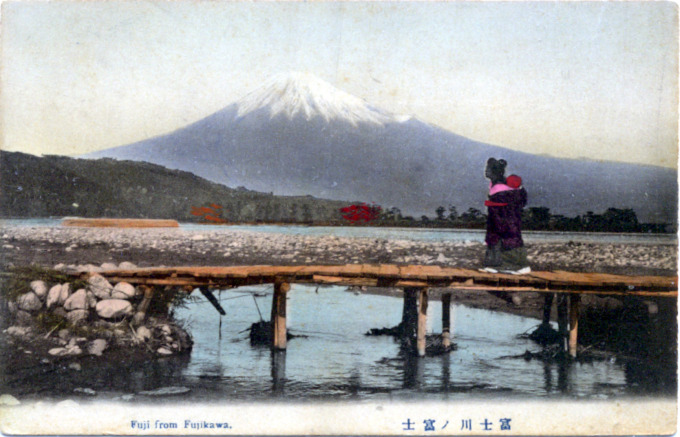
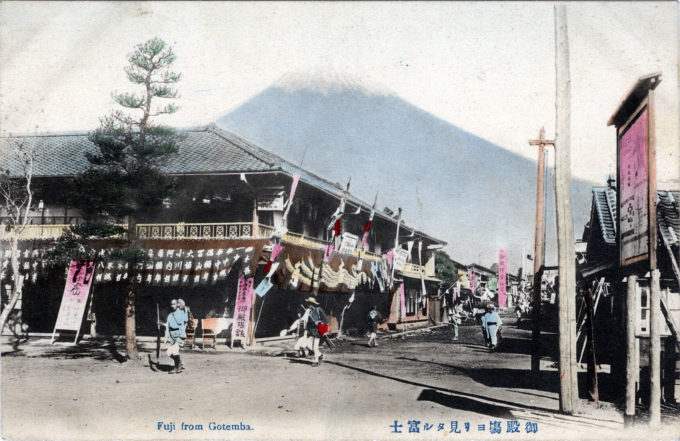
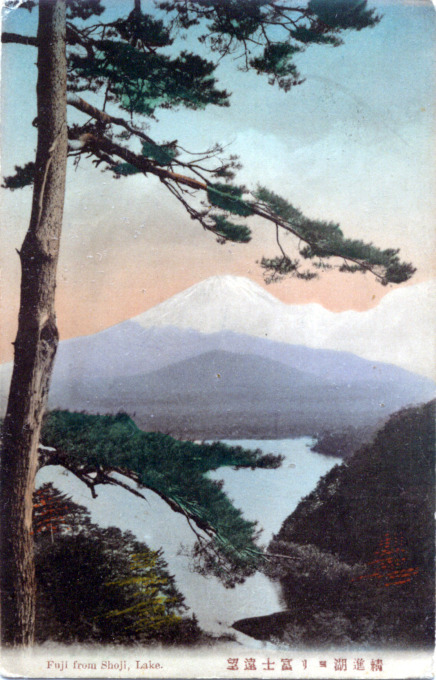
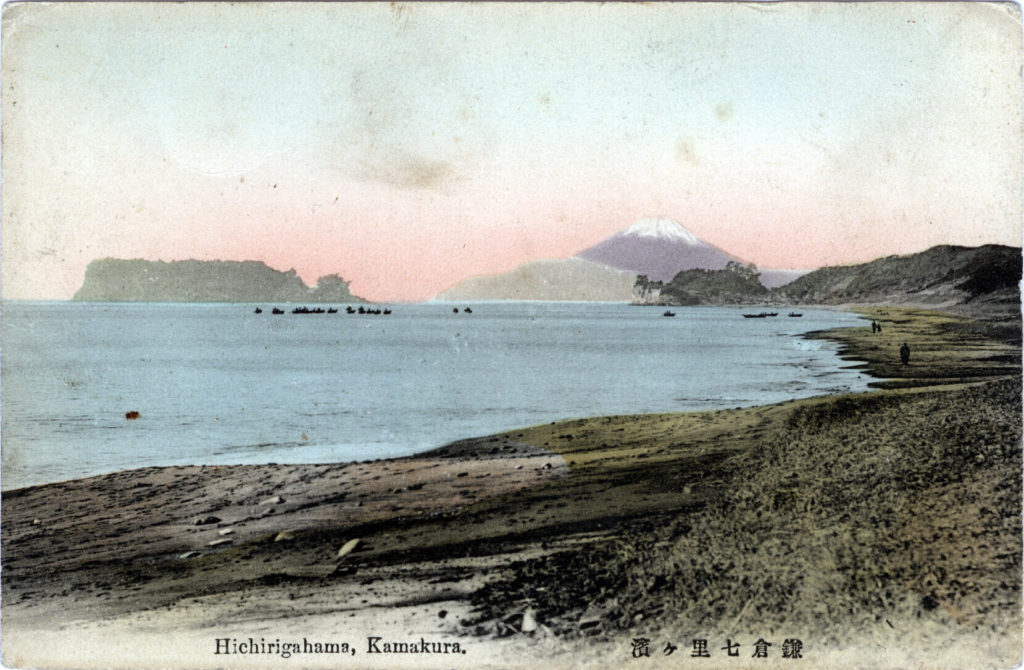
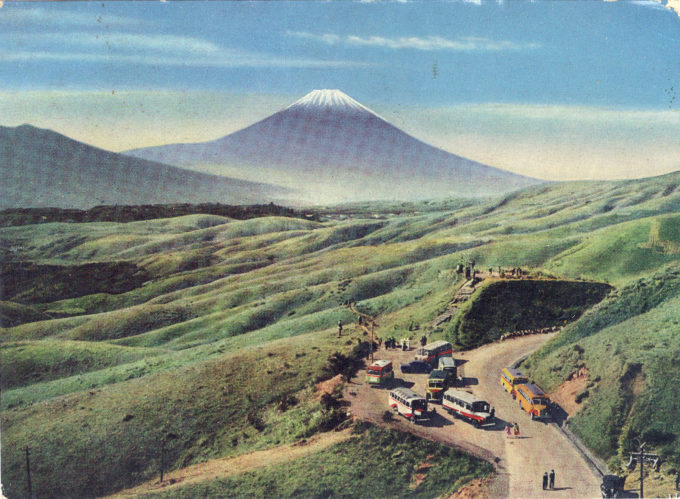
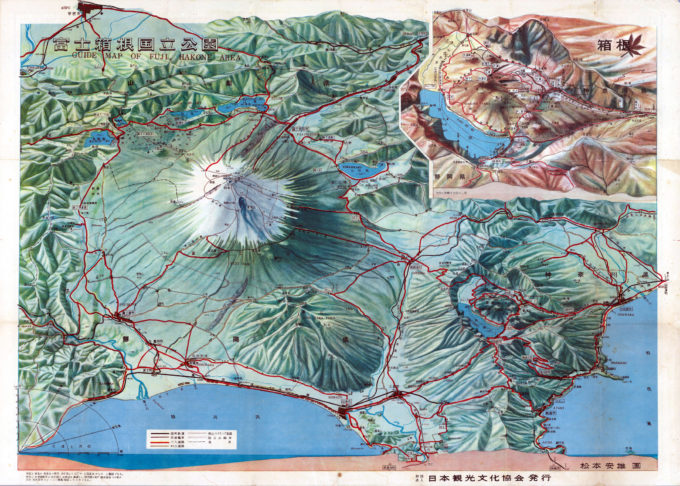
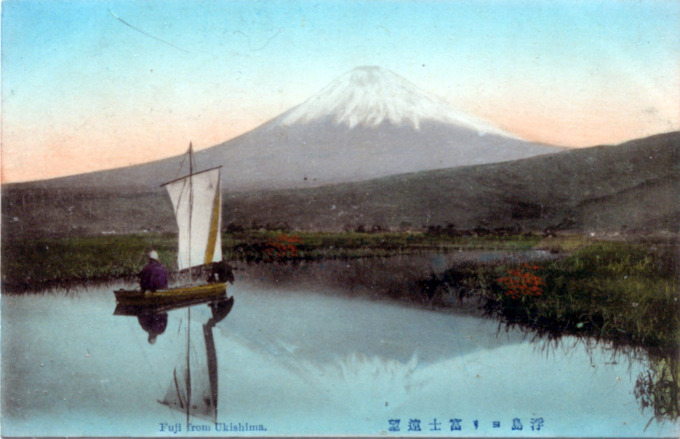
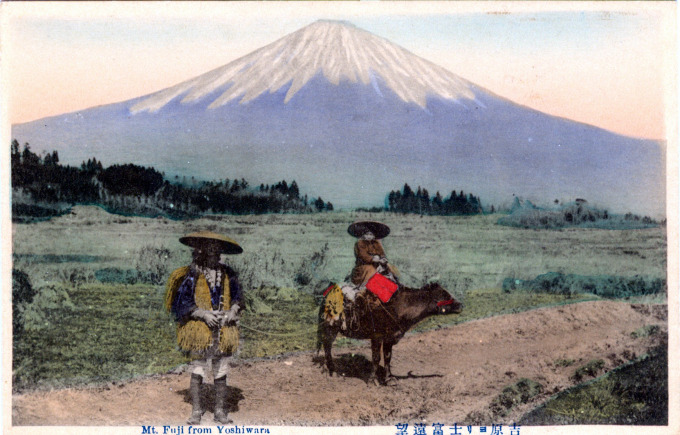
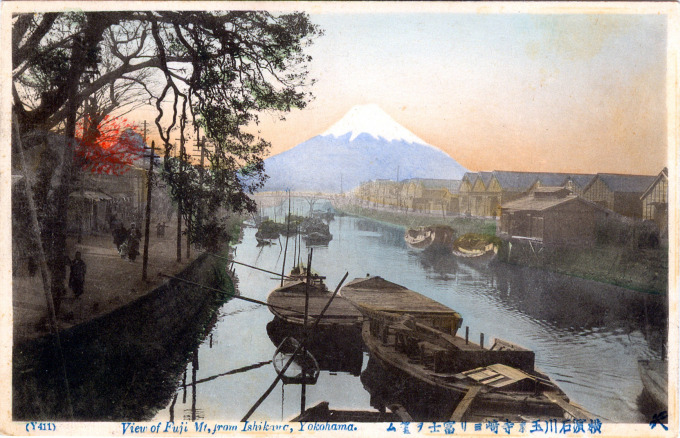
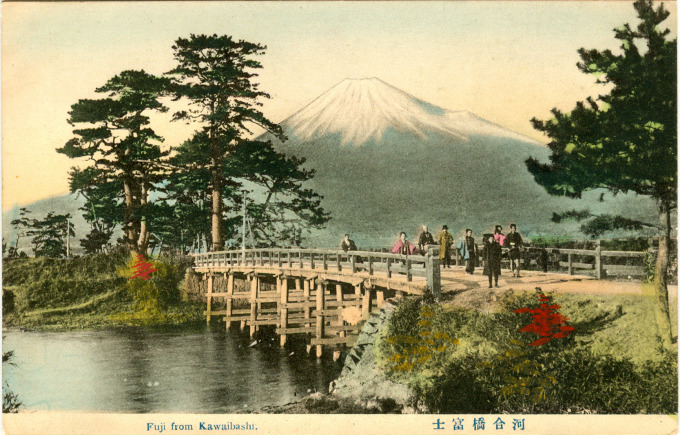
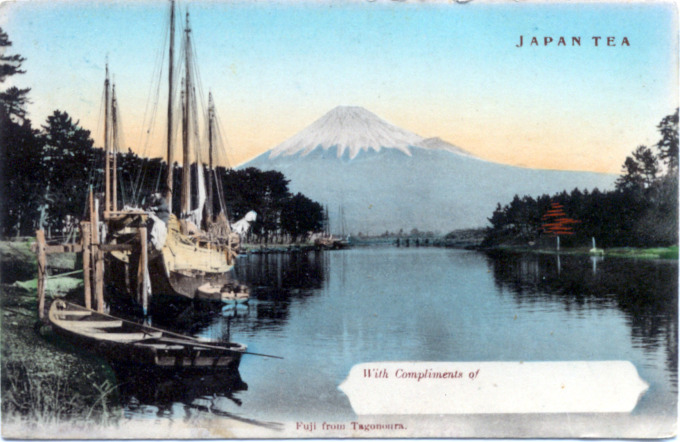
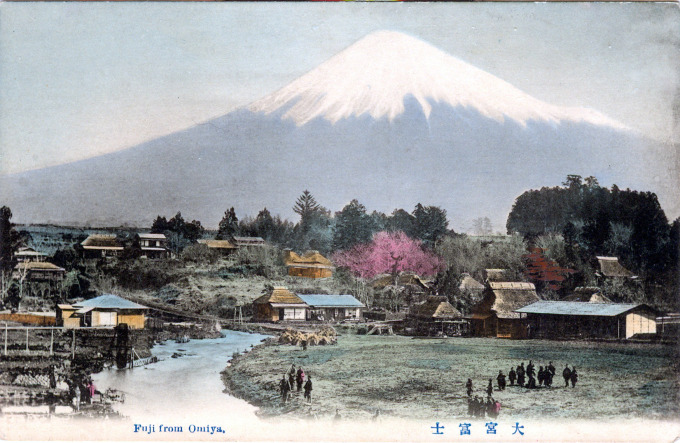
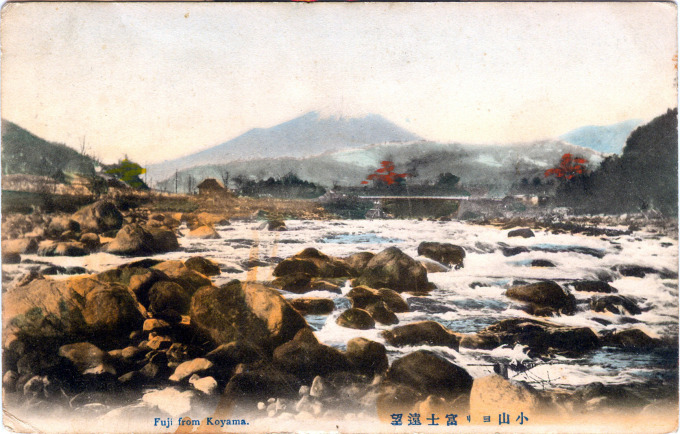
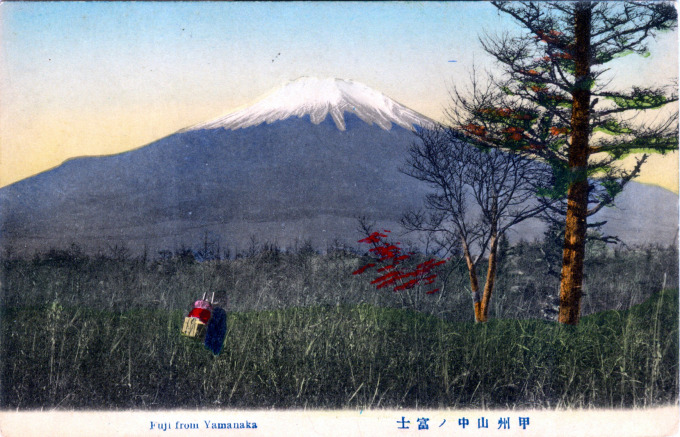
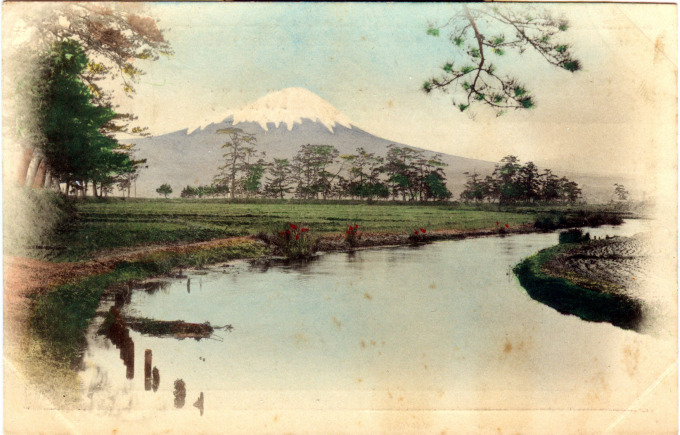
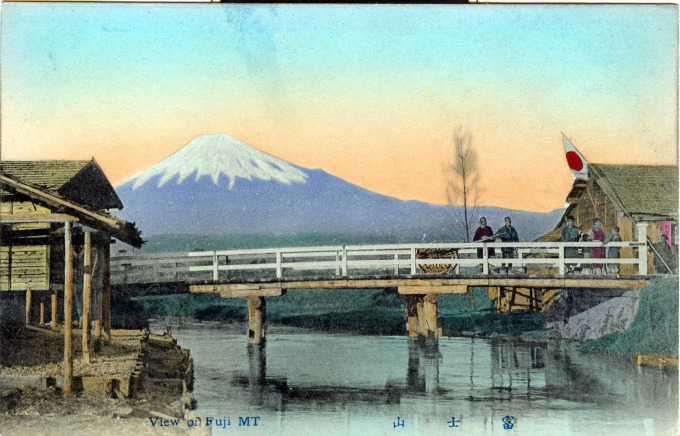
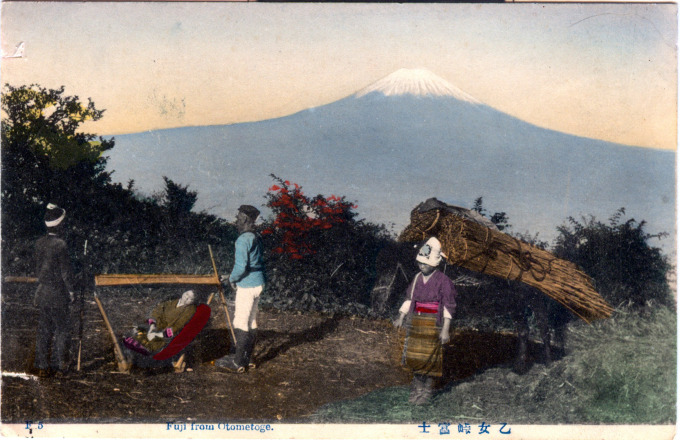
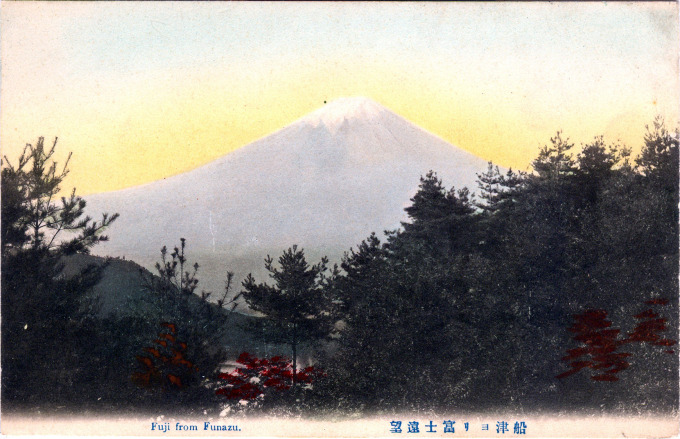
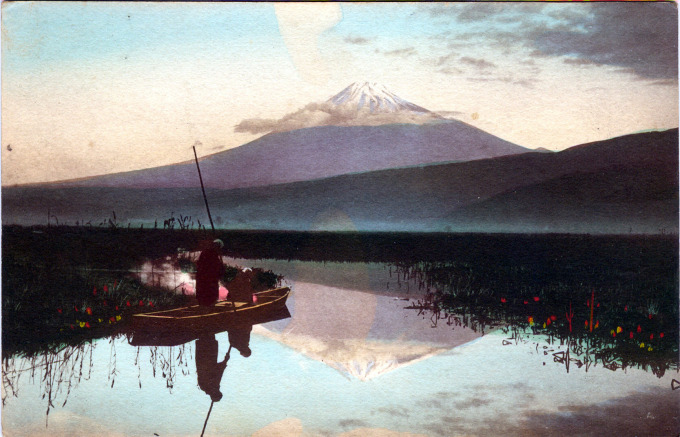
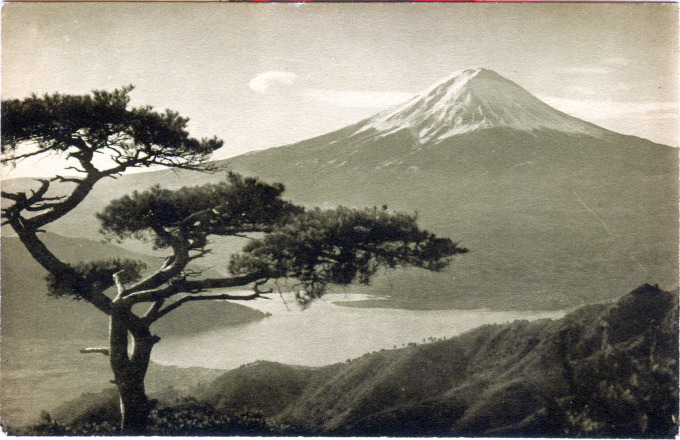
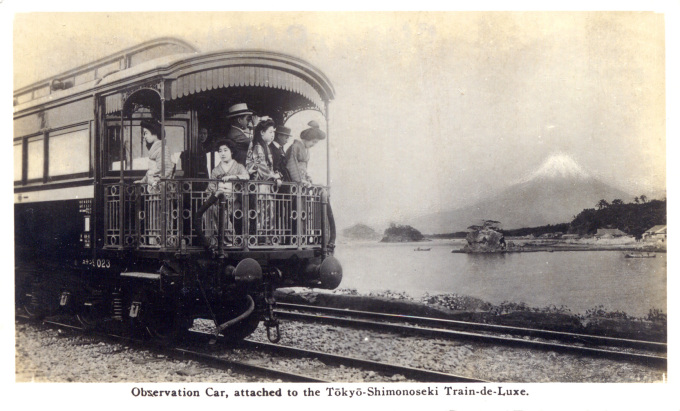
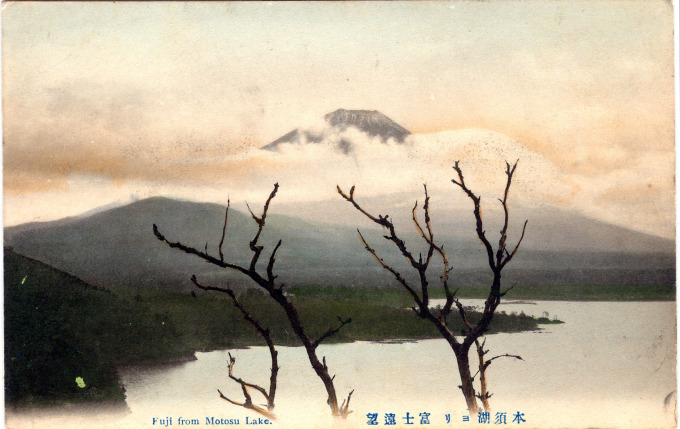
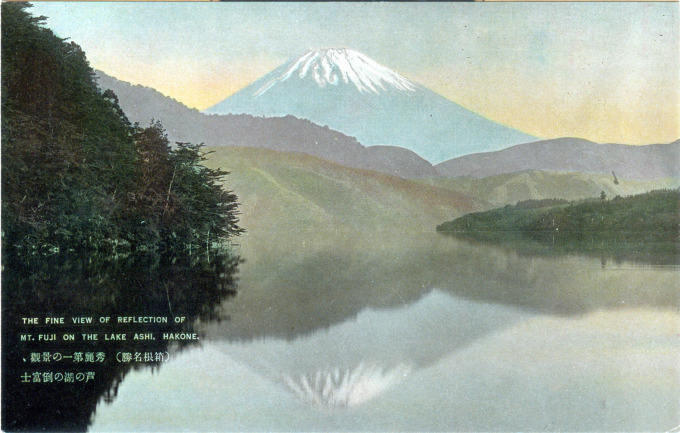
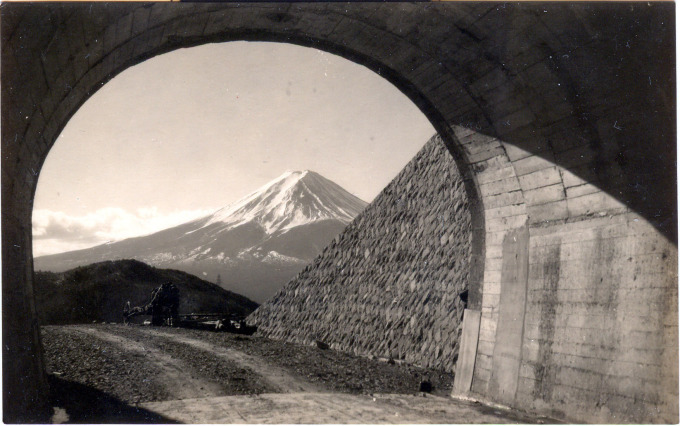
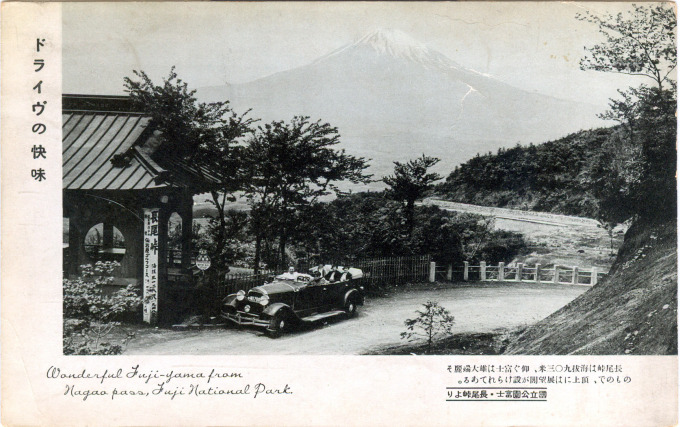
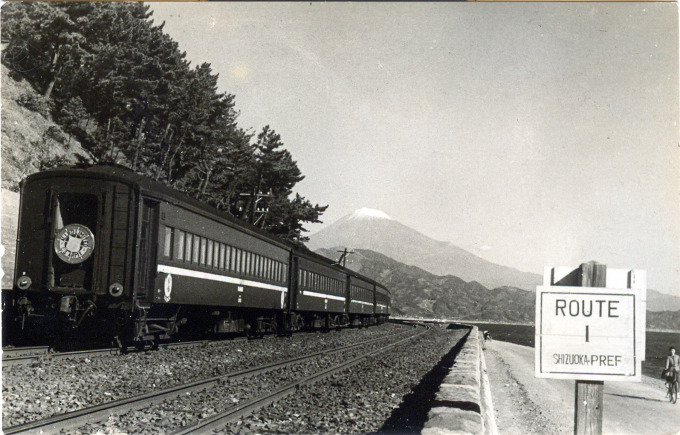
Pingback: Mount Fuji reflected upon Lake Ashi, c. 1920. | Old Tokyo
Pingback: Mt. Fuji and Lake Hakone Railway Access and Bus Routes, c. 1930. | Old Tokyo
Pingback: "Fuji mountain from Suzukawa", 1906. | Old Tokyo
Pingback: “Fuji from Gotemba”, c. 1910. | Old TokyoOld Tokyo
Pingback: “Sai-no-Kawara of the top [of Mt.] Fuji”, Japan, c. 1930. | Old TokyoOld Tokyo